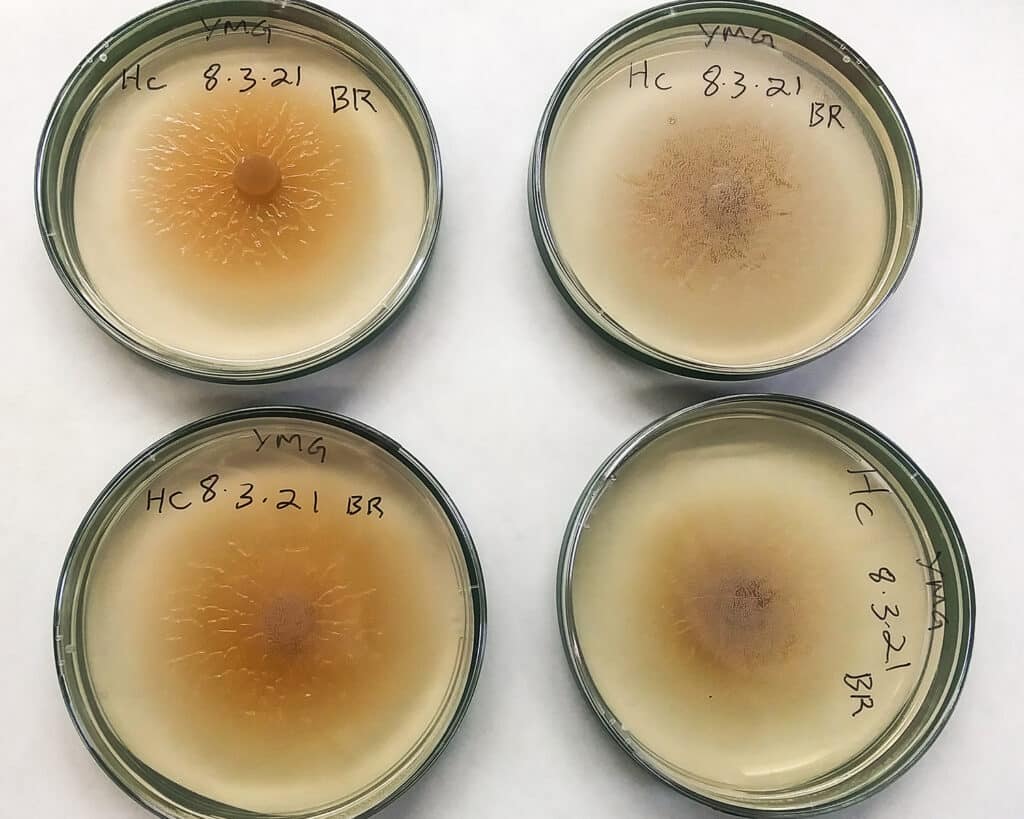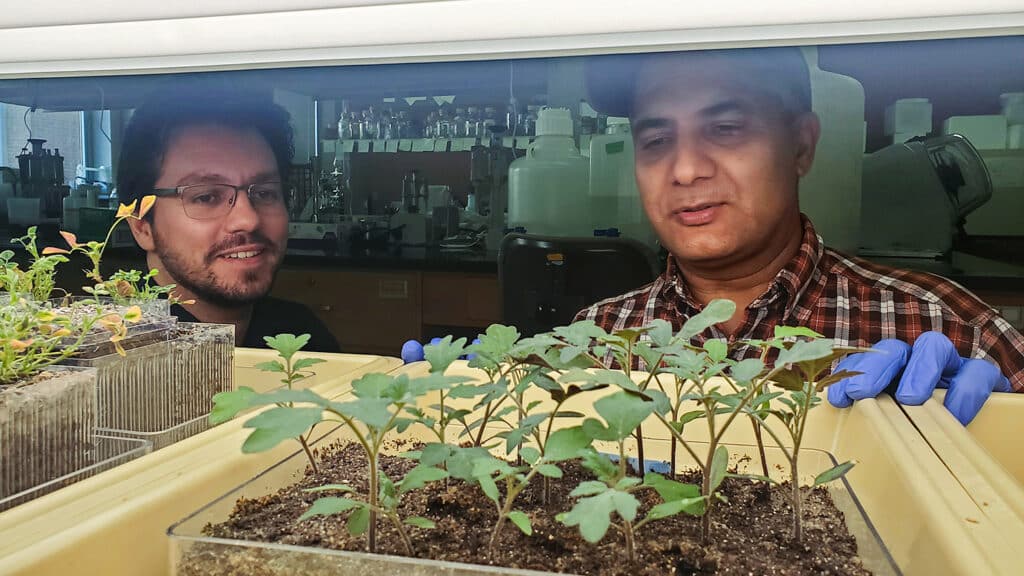Fungi Could Be the Future of Healthier Plants

A vital ecosystem is living under our feet. Below the world we see every day is a complex living network, made up of plant roots, nutrients and fungi. Kevin Garcia, an assistant professor in the Department of Crop and Soil Sciences, is researching how certain fungi can strengthen this hidden environment and, in turn, sustain the plants we use up above.
Mycorrhizal fungi develop a symbiotic relationship with plants. The fungi take up space in the tissue of plant roots. In beneficial relationships, mycorrhizal fungi help plant roots absorb water and minerals, like phosphorus, nitrogen and potassium. Members of Garcia’s team study specifically how arbuscular mycorrhizal and ectomycorrhizal fungi help plants take in potassium, which is deficient in many North Carolina soils. By studying this type of fungi’s operations, Garcia’s lab can pave the way for replacing some unsustainable fertilizer with fungi that naturally supports plant life.
“For a long time, we created chemical environments for plants to live in, but the problem with some fertilizers is they’re not renewable.” Garcia said. “Instead of creating a chemical environment, we need to create plants that can better interact with their microbiological environment in the soil. We need to understand at the basic level how plants can acquire these resources. If we better understand these associations in the lab, we can better understand the associations in our agricultural ecosystems.”

The project received funding from the U.S. Department of Agriculture and National Institute of Food and Agriculture’s Early Investigator Award.
Microbiology of fungi and soil intersects with numerous agricultural fields. Ben Rose, a master’s student in soil science, used to work in community gardening and ornamental landscaping. He would read any scientific information he could find about maintaining tree health, but he reached a point where published research couldn’t answer his questions about trees’ relationships with microbes. He began working in Garcia’s lab while he earned his undergraduate degree in soil sciences. He continues to research how ectomycorrhizal fungi affect trees’ health.
“I’m a very curious person, inherently,” Rose said. “It’s great to study things that haven’t been researched, to be branching off into these areas of research where there are not clearly defined protocols and things people haven’t done before.”
He plans to pursue a Ph.D. in forestry after earning his master’s degree. By studying at NC State, Rose has witnessed how vital interdisciplinary research is to agriculture and plant sciences.
“Ultimately, my goal is to understand nutrient dynamics in productive soil systems to inform land management decisions,” he said. “We need to make the best use of these precious resources without unraveling their natural integrity.”
Research takes place in a laboratory, in greenhouses and in the field. While most of Garcia’s students work in one location, Danielle Cooney works in all three. Her work translates discoveries between each stage of research.
“My work involves a lot of coordination,” Cooney said. “The field growing season involves packing seed, planting, checking in on the crops, and figuring out how to navigate challenges like deer and other animals. At the same time, we’re running growth chamber experiments with soybeans and mycorrhizal fungi spores that will inoculate the soybeans. A lot of things overlap in my work. It’s the perfect opportunity to move around different spaces and make connections.”
Cooney will defend her doctorate this month. Her academia journey started in crop breeding, but when she learned about Garcia’s research, she decided to explore a new aspect of agriculture.
“I wanted to learn how our selection pressure in breeding influences,” Cooney said. “In breeding traits, we look for yield, plant growth, plant health — factors that are above ground. Breeding is usually done in the most high-functioning, optimistic environments. Below ground is so complicated. Fungi tend to be more beneficial in environments where nutrients are limited. Fungi basically give plants a second set of roots and provides the plant with water and nutrients in exchange for lipids and sugars.”
Cooney hopes to return to her family’s farm in the Midwest, where she grew up and got her start in agriculture. She wants to continue advancing agricultural production science, too. Her research has focused on soybeans, a plant she loves for its variations in growth capacity, its protein and its beauty. It’s also a staple back home. At NC State, she’s been exposed to new soils and plants, learning how to manage different styles of agriculture in her career.
“I’ve learned not only about soil diversity but also crop diversity,” she said. “Getting all of that exposure and adding that experience to my knowledge of Midwestern crops will tee me up to be a strong leader in the future. I can think about large-scale systems as well as North Carolina’s unique style of agriculture.”

So far, research in Garcia’s lab has shown that mycorrhizal fungi’s benefits in plants are heavily dependent on context. The lab works with several types of plants, including loblolly pines, soybeans, maize, tomatoes and Medicago truncatula, a clover-like legume. By studying the dynamics of these symbiotic fungi, Garcia and his fellow researchers are discovering what it can bring to the future of plant health.
“Understanding these microbiological environments will help farmers understand their soil and will help plants interact with soil microflora,” Garcia said. “We want to see what we can harness.”
This post was originally published in NC State News.